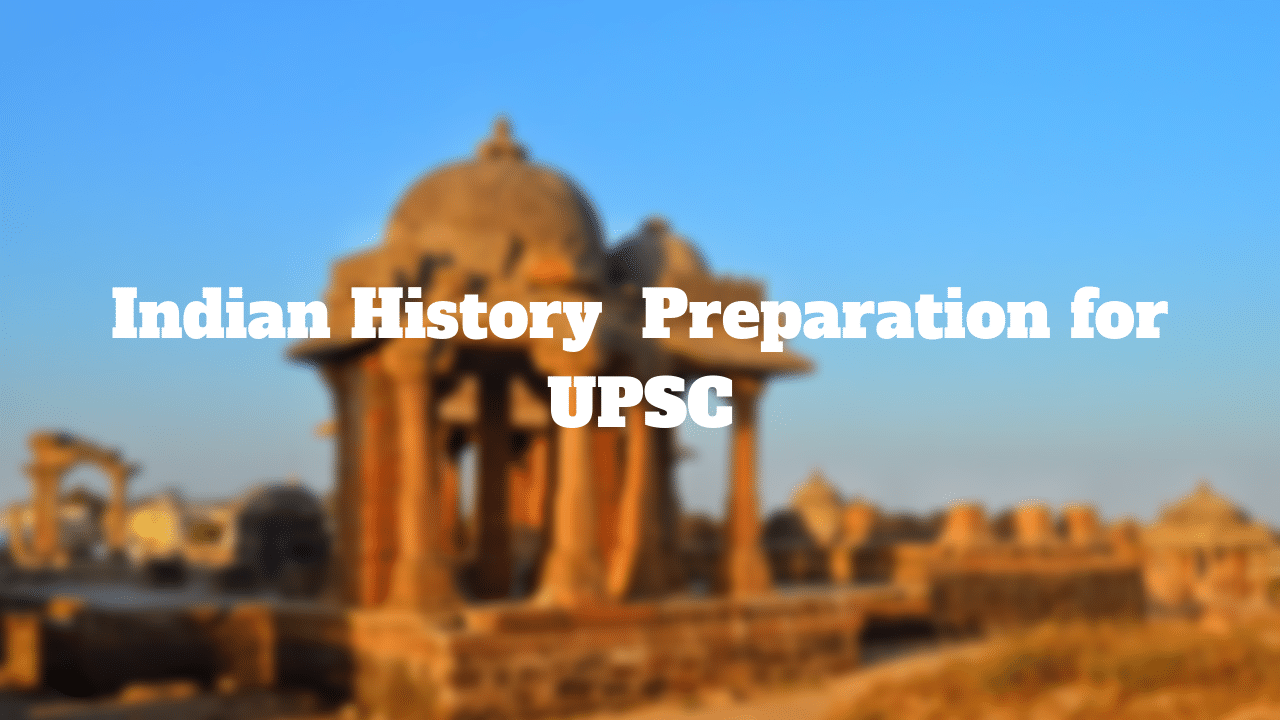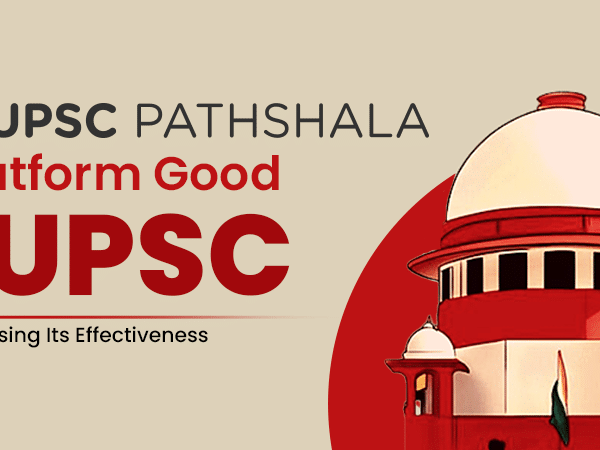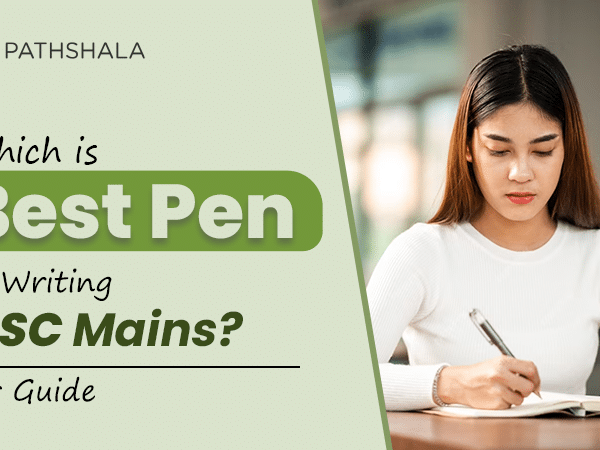History is one of the most chosen optional subjects to be taken up n UPSC Civil Service Examinations. Unfortunately, though, the syllabus is huge and daunting, even though it is easy to understand and there are plenty of good sources to study from. However, one big plus for history is the large overlap it enjoys with the general studies paper.
You will need both hard work and the right strategy to crack the History optional in UPSC. You will have to stress on concepts that lead to historical events, rather than just facts. We give below the strategy to study the history syllabus, section by section.
Quick Links:
- How to prepare Ancient Indian history
- How to prepare Medieval Indian History
- How to prepare Modern Indian History
- Important Topics
How to prepare Ancient Indian history
Lately, the emphasis is on the sources of ancient Indian history. So you should also concentrate on the sources. Archaeological sources are the most important sources to study the history of ancient India, so study those most carefully and make notes on them. Archaeological sources span the prehistoric times right up to the Iron Age and you will need to be updated on the latest discoveries in these sources.
Certain sections have been given higher emphasis in the new syllabus like the politico-administrative history from the pre-Mauryan period – the rise of Mahajanapadas, to post-Gupta period-beginning of feudalism and centrifugal trends. So make sure you prepare these portions well, starting from the Indus civilization and following the evolution up to the post-Gupta period.
Make notes on Brahmanical, Buddhist and Jain philosophical schools as philosophical thinkers and their schools of thought are the other areas of emphasis.
Also, make notes on the contribution by the Indus valley civilization to ancient Indian scientist like Patanjali and Aryabhatta besides others in the science and mathematics segments.
Recommended reading:
Best Books to study for Ancient history for UPSC Exams
How to prepare Medieval Indian History
You need to divide Medieval Indian history into 5 subsections to make it easier to tackle.
- Short answers for contemporary historians and sources of medieval history.
- Study in detail – Delhi Sultanate.
- Study in detail – Mughal Empire with special emphasis on Akbar’s rule.
- Study in detail – all provincial dynasties with special emphasis on Chola dynasty, Vijaynagar dynasty, and the Maratha dynasty.
- Study in detail – Society during medieval times; Bhakti movement: Sankaracharya, Ramanuja, Chaitanya, Kabir, Bhakti movement in South India, Lingayats, Maharashtra Dharma; Sufi-movement; architecture from early Sultanate to the Lodis, etc. Make notes keeping both the comparative and evolutionary approach in mind.
How to prepare Modern Indian History
For Modern History, which forms the bulk of the question paper, prepare the topics in terms of chronology.
a) British conquests and Indian reactions:
- Study the native states like Mysore, Punjab, the Maratha’s resistance to the British
- Background of political, social and economic events leading to the revolt of 1857.
- Make notes on other significant uprisings like tribal, civil and peasants’ revolt.
b) British economic policy:
- Economic exploitation of India under the British Economic Policy.
- Take into account pro-nationalistic and leftist ideological viewpoints
c) Socio-cultural aspects:
- Indian Renaissance,
- Christian missionary activities,
- Evolution of educational and social policies and how it led to the rise of nationalism in India.
- Literary personalities; like Tagore, Premchand, S Bharati and others; film and theatre are important topics.
- Prepare notes from the perspective of tracing the cultural evolution of modern India.
d) Freedom struggle:
The section on the Freedom Struggle of India or the history of Indian Nationalism usually takes up 90 to 100 marks in the general studies paper and is therefore extremely important. So a detailed study of the period between 1885, when the Indian National Congress was founded, to 1947, the year of Independence and Partition of India is very important.
Divide this portion into further subsections as below:
- 1885 to 1916 – early Indian nationalism
- ‘Home Rule’ movement; 1916 to 1945, which is the ‘Gandhian era’; from ‘Champaran experiment’ to ‘Quit India movement’.
- The Gandhian thought and methods of mass mobilization
- 1945 to 1947 – a chronological study
- Analyze how and why Indian nationalism, yielded a paradoxical result, which is partition and freedom
- Other strands of national movement and rise and growth of revolutionary terrorism;
- Swarajist movement;
- social and communist movements;
- Indian National Army – the role of Subhash Chandra Bose
- Rise and growth of communalism too must be prepared.
e) Independence to 1964:
- The Nehruvian era and development of an independent Indian polity;
- The Constitution, planned economy and foreign policy are the topics for in-depth preparation.
World history
- Renaissance,
- Enlightenment and socialist ideas.
- All major revolutions that shaped the modern world history.
- Two World Wars have to be studied comprehensively.
- Focus on European history
- The second half deals with more contemporary events and is relevant to General Studies’ paper as well
- Concentrate on concepts rather than facts
- Post-World War II developments, like
- the ‘Cold War’
- Division of world into two military blocs,
- NATO and Warsaw pact;
- Emergence of the ‘Third World’ and their decision to remain nonaligned;
- United Nations;
- Decolonization
- Factors constraining the development of the newly-independent Latin American and African countries.
- The circumstances leading to the end of the ‘Cold War’ and the US ascendancy in the world, as well as the disintegration of Soviet Union, fall of Berlin Wall and the US and the UN victory in the Gulf war.
- Integration of nations across the globe, which is ‘Globalisation’. Continent-wise, development in this regard has to be studied. European Union has achieved some success in this regard but “Brexit” has dampened such hopes.
Recommended Reading:
How To Study World History for UPSC Civil Services Mains?
UPSC History Syllabus For IAS
Important Topics
ANCIENT INDIA
1. Indus Valley civilization
– Society, Religion
– Important Harappan towns & artifacts excavated
– Extension
– Town Planning
– Economical Importance
– Political Life
– Causes of decline
2. Aryan Civilization: – Origin
– Vedic literature
– Religion
– Society
– Polity
– Economic Condition
– Difference between Indus and Aryan
3. Religions movements.
Jainism
– About Mahavira & teachings
– councils
– Important books causes for decline
Buddhism
– Buddha teachings
– Councils
– Important books
– Causes for decline
4. The Mauryan Empire – About Ashoka in detail
– Article and Architecture
– Administration
– Society
5. Central Asian contacts and their results.
– Indo- Greeky
– The Shakas
– The pacthians Article and Architecture
– The Kushans – Kanishka in detail
6. South Indian History
– Sangam Age
– Satavahanas
– Chola’s
– Pallavas art and architecture
7. Gupta Empire
– Administration
– Article and Architecture
– Social development
8. Post-Gupta period
– Harsha in detail
– Fendal System
MEDIVAL INDIA
1. Turkish Invasion
2. Delhi Sultnate
– Rulers and their contribution
– Aibek, Iltumish, Balban, Aluddin Khilji, Mohamad bin Tughlug, Feroz Tughlug, Sikandu lodi, Ibrahim Lodi in detail
– Administration (Important terms)
– Art and Architecture
3. Vijayanagar Empire
– Krishna Devaraya in detail
– Important temples and books
4. Mughals
– Babar’s wars
– Akbar in detail
– Jehangir, Shahjahan, Aurangazeb in detail
– Administration
– Society
– Causes for decline
– Important books (authors)
– Art and Architecture
MODERN INDIA
1. Marathas
– Shivaji in detail
– Administration
– Peshwas and their administration
2. European powers
– Chronologoical order of European powers in India
– East India Company
– Important Governor General and their contribution
Warsen Hastings, Coronwallis, wellesely, William Bentinck, Dalhousie, Lytton, Rippon, Curzon, Mount Patten.
– British rule impact on India
– Social and cultural developments/Awakening
3. Reform movements
– In detail
– Founders and their contribution
– Books
4. 1857 Revolt
– In detail
5. Freedom Struggle
– Formation of INC.
– Moderates and Extremist
– Partition Role of Bengal/Surat Split
– Muslim league
– Lucknow pact
– Minto Morley/Montagu Chelmsford
6. Ghandhian Era
– His experiments
– Non Cooperation Movement
– Civil dis-obedience movement
– Gandhi – Irwin Pact
– August Offer
– Quit India Movement
– Cripps mission
– Cabinet Committee
– Partition
7 .Important
– INC meetings and its resolutions
– President, place
8. Extremist
– Terrorist activites
– Bengal
– Maharastra
– Some other places
9. Subash Chandra Bose
– INA formation in detail





